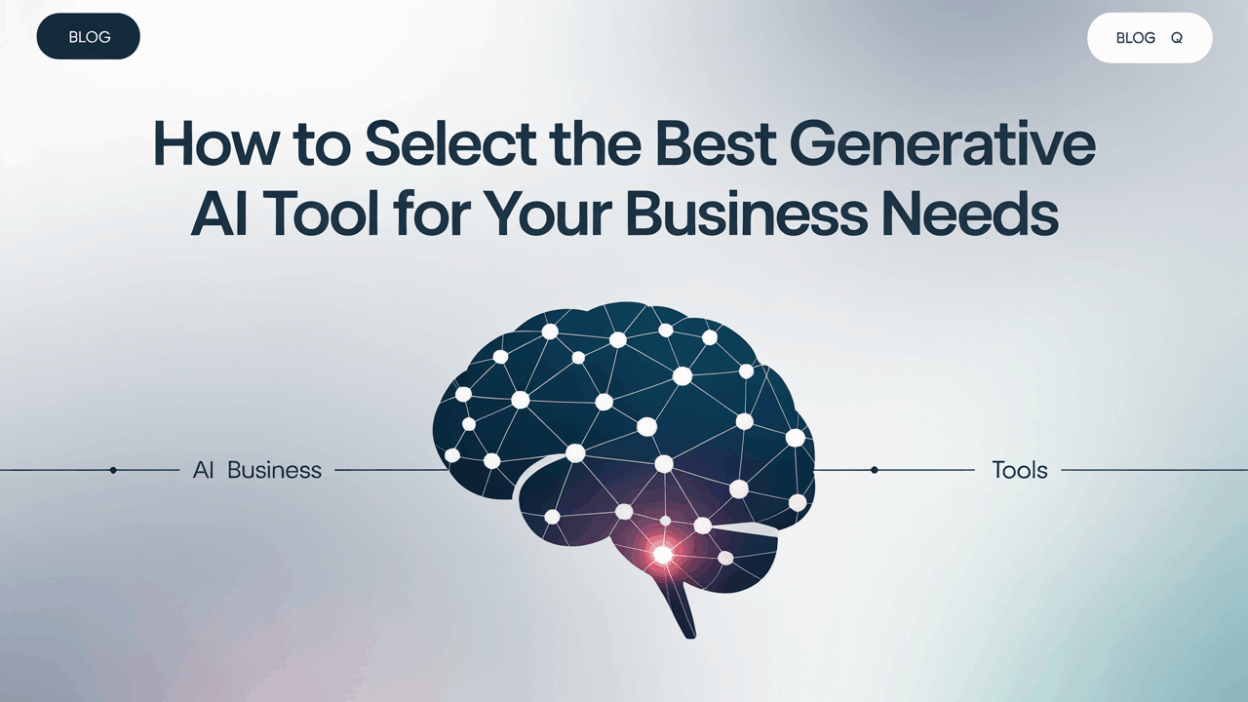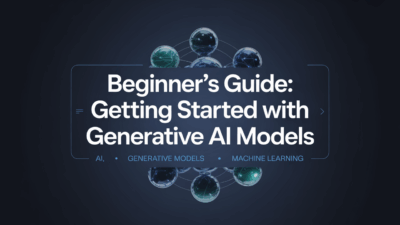In today’s fast-paced digital landscape, generative AI tools are transforming how businesses operate, create, and engage with customers. From content generation to data analysis, these tools offer unprecedented opportunities for innovation and efficiency. However, the sheer number of available options can make selecting the right tool a daunting task. In this post, we’ll walk you through a structured approach to choosing the best generative AI tool tailored to your business needs.
Define Your Goal
Before diving into the selection process, it’s essential to clearly define what you want to accomplish with generative AI. Are you looking to streamline content creation, enhance customer interactions, or optimize internal workflows? Establishing clear objectives will help narrow down the list of potential tools and ensure that the one you choose aligns with your business goals .
Choose Your Base Tool
Once your goal is defined, consider which type of generative AI tool best suits your needs. There are several categories to explore:
- Text Generation: Tools like ChatGPT and Jasper AI are excellent for generating high-quality written content .
- Image Creation: DALL-E 3 and Midjourney are popular choices for creating stunning visuals based on textual descriptions .
- Data Analysis and Preparation: Platforms such as IBM watsonx.data can centralize and prepare your data for generative AI workloads, ensuring accurate and efficient processing .
- Multimedia Editing: Runway ML offers powerful tools for video and audio editing powered by AI .
Each tool has its unique strengths, so selecting the right one depends heavily on the specific tasks you need to automate or enhance.
Clarify Where You Want AI to Help
It’s also important to identify the exact areas within your business where AI can add the most value. For instance, if you’re in marketing, tools like EnGenius can be invaluable for content marketers looking to optimize their output . On the other hand, sales teams might benefit more from AI-driven customer engagement platforms that deliver personalized interactions at scale .
Assess Your Existing Tools
Integration is another critical factor to consider. The generative AI tool you select should seamlessly integrate with your existing systems and workflows. Evaluate whether your current tools can support the new AI capabilities or if adjustments will be necessary. A well-integrated solution minimizes disruption and maximizes productivity .
Consider Customization and Scalability
For businesses with unique requirements, a custom AI tool may be the best option. Custom solutions can be trained to understand your company’s specific terminology, formats, and writing style, ensuring consistency and accuracy in outputs . Additionally, look for tools that can scale with your business as it grows, avoiding the need for frequent replacements or upgrades.
Evaluate User Experience and Support
User experience plays a significant role in the adoption and effectiveness of any tool. Choose a platform with an intuitive interface that requires minimal training for your team to use effectively. Also, check the level of customer support offered—prompt assistance can make all the difference when issues arise .
Compare Costs and ROI
Finally, weigh the costs of each tool against the expected return on investment (ROI). While some tools may have higher upfront costs, they could offer greater long-term benefits. Look beyond price tags and focus on the overall value the tool brings to your business .
Conclusion
Selecting the best generative AI tool for your business involves careful consideration of your goals, the specific functions you need, integration capabilities, customization options, user experience, and cost-effectiveness. By following a structured approach, you can confidently choose a tool that not only meets your current needs but also supports future growth and innovation.



